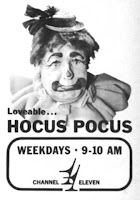Harvey E. West, Sr (1894-1979)
To us kids, Harvey West Park was really Harveywestpark -- one word that meant fun, sun, and running around! The fact that it was actually a person's name -- a man named "Harvey West" -- didn't really connect with us.Harvey West was born in 1894 near Santa Cruz, just down the road in Soquel, California. He was a lumberman by trade, starting the Placerville Lumber Company in 1936. Later in life, his fortune made, he became a wonderful philanthropist. Harvey donated 27 of the 50 acres that make up the park, which was dedicated on May 30, 1959. Harvey West passed away in 1979.
The Great Big Steam Locomotive
The Southern Pacific engine #1298 was built in September 1917 as one of the last of the S-10 class 0-6-0 engines by the Baldwin Locomotive Works in Philadelphia. There were 27 S-10s built in total during the 1913 and 1917 production runs, and only six survive to this date: Engine #1215 is in San Jose, CA; 1221 is in Deming, NM; 1233 is in Woodland, CA; 1237 is in Salinas, CA; 1238 is in Fresno, CA; and 1298 is still in Santa Cruz, CA.Back in the 1970s, you could run around and play on both the locomotive and the oil tender. The tender was sold around 1987 to Rick Hamman as a spare for the SP C-8 2706, which are all now owned by John Manley, so the SP S-10 1298 at Harvey West Park is much less imposing than it was at one time. Sadly, it kind of looks cute now -- not the super powerful monster of steam that it once was to a child's eyes. The tender looks like a C-9 style, and carried oil to power the locomotive.
In September and October of 1987, the Santa Cruz City Council voted to sell the entire train engine and tender at the recommendation of the Parks & Rec department. There were lots of letters to the editor, and eventually only the tender was sold, but the train is no longer a playground structure -- it now has signs that stay keep off.
The S-10 was a switcher engine, doing the hard work of shuffling short cuts of cars into their places, while making up trains in the yard. These switch engines moved from rail yard to rail yard, making up freight trains, or doing short shuttling jobs of moving customer cars directly to their on-rail drop-offs. Larger facilities, such as the San Jose passenger terminal, had their own depot switchers dressed up with chrome and a more glamorous livery paint job.
Arizona Eastern Railroad #39
According to HL Broadbelt Collection, as listed in the Encyclopedia of Western Railroad History, SP steam engine 1298 began its life as the Arizona Eastern Railroad Company's number 39, and was Baldwin number 46313 built in September, 1917. Arizona Eastern merged into the Southern Pacific Railroad Co. in 1924, and #39 was re-numbered as Southern Pacific 1298. It's unknown where locomotive 1298 did the bulk of its work -- it could have been nearby at San Jose or Watsonville, or even the small switch yard in Felton, as perhaps the yard downtown at the Santa Cruz depot. Since it was originally in the Arizona Eastern fleet, it was most probably used as terminal switcher in and around San Diego, including San Diego's Santa Fe Union Depot for passenger train switching -- there were a couple 0-6-0 switchers used by the Arizona Eastern in this capacity, including ones leased back from the Southern Pacific during WW II. As of 1956, the 1298 is listed as being assigned to "Southern Pacific W" as stated in a September 30, 1956 bulletin -- where "W" could just mean West.
The engine arrived in Santa Cruz in 1961, as reported by Railroad Magazine in 1961's Volume 73-74: "The Southern Pacific's final retired steam engine, a switcher, No. 1298, has just gone to a park in Santa Cruz, California."
Specifications
- Wheels: 0-6-0
- Builder: Baldwin Locomotive Works
- Build Date: 09/1917
- Construction No.: 46313
- Empty Weight: 154,600
- Weight on Drivers: 154,600
- Driver Diameter: 51
- Tractive Effort: 29,720
- Boiler Pressure: 190
- Cylinders: 19x26
- Fuel: Oil
- Gauge: Standard
























